Last updated: January 19, 2024
Article
Oklahoma Sign Makers and Endangered Signs
Abstract
For lovers of roadside architecture and signage, it is always a thrill to stumble upon an old sign with crazy angles and peppy typography that harkens back to the space race days when we really thought that the future was now. The experience is even richer if the neon tubes still illuminate the darkness with their sparkling letters or shapes in hues of green, red, blue, or white. While many of these odes to the halcyon days of yesteryear are long gone, hundreds of survivors in various conditions remain scattered around Oklahoma – along lonely stretches of Route 66 and other byways, in small towns scattered on the prairie, and in large metropolitan areas teaming with activity. This paper will introduce readers to signs that were constructed from the 1920s – 1960s and shares the career of one Oklahoma City man who was responsible for creating dozens of the state’s most interesting and original signage.
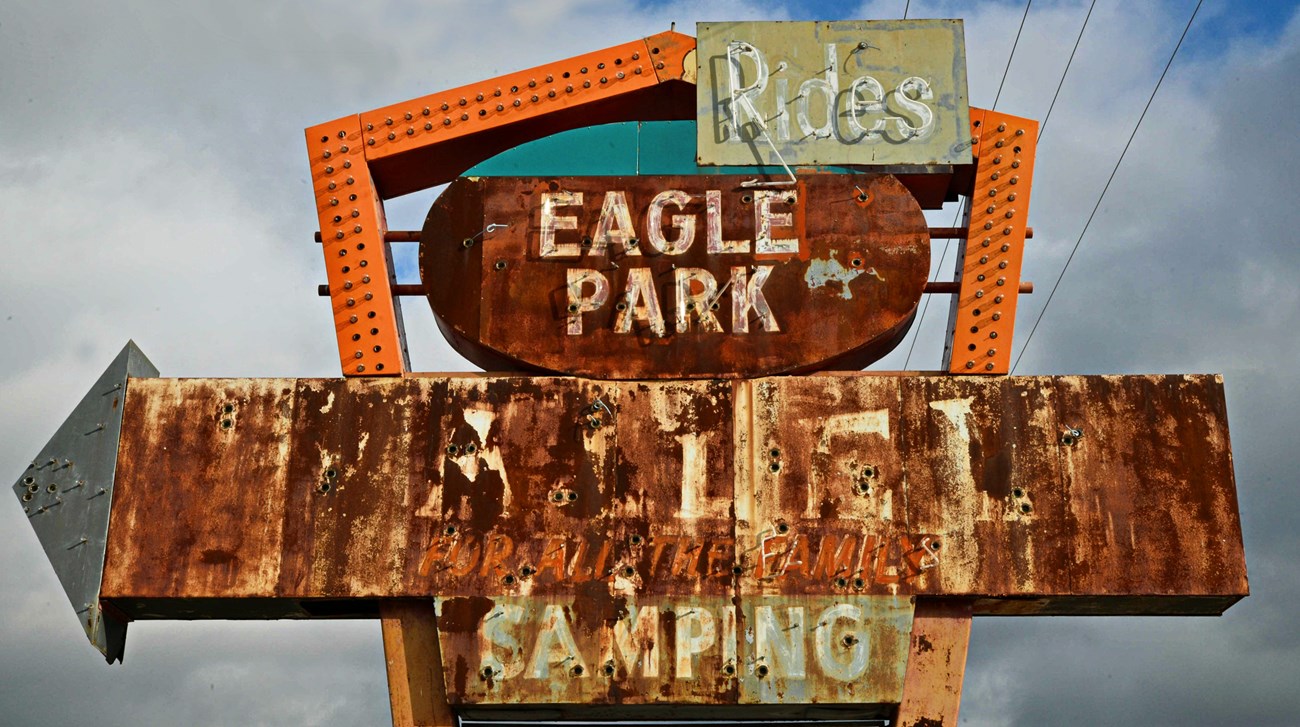
Lynne Rostochil
Existing Signs
One of the earliest signs covered in the presentation is the massive Beard Motor Company tower that sits just two blocks off of Route 66 in Bristow. To take advantage of the increasing flow of traffic along Route 66 after World War II, Bristow businessman and pilot, Hubert “Red” Beard and his sometimes partner, Watt Henry decided to open a new dealership and auto repair center to serve the community and travelers passing through town. Beard designed the Streamline Moderne building, and, after two years of construction, the Beard Motor Company opened in 1947. While the business was located just two blocks off of the busy highway, it was impossible to spot the Beard Motor Company from Route 66. To solve this problem, Beard erected a massive, 75-foot tower beside the dealership that looked like an oil rig and advertised “Chrysler” in large letters vertically and “Plymouth” in letters running horizontally for all to see.
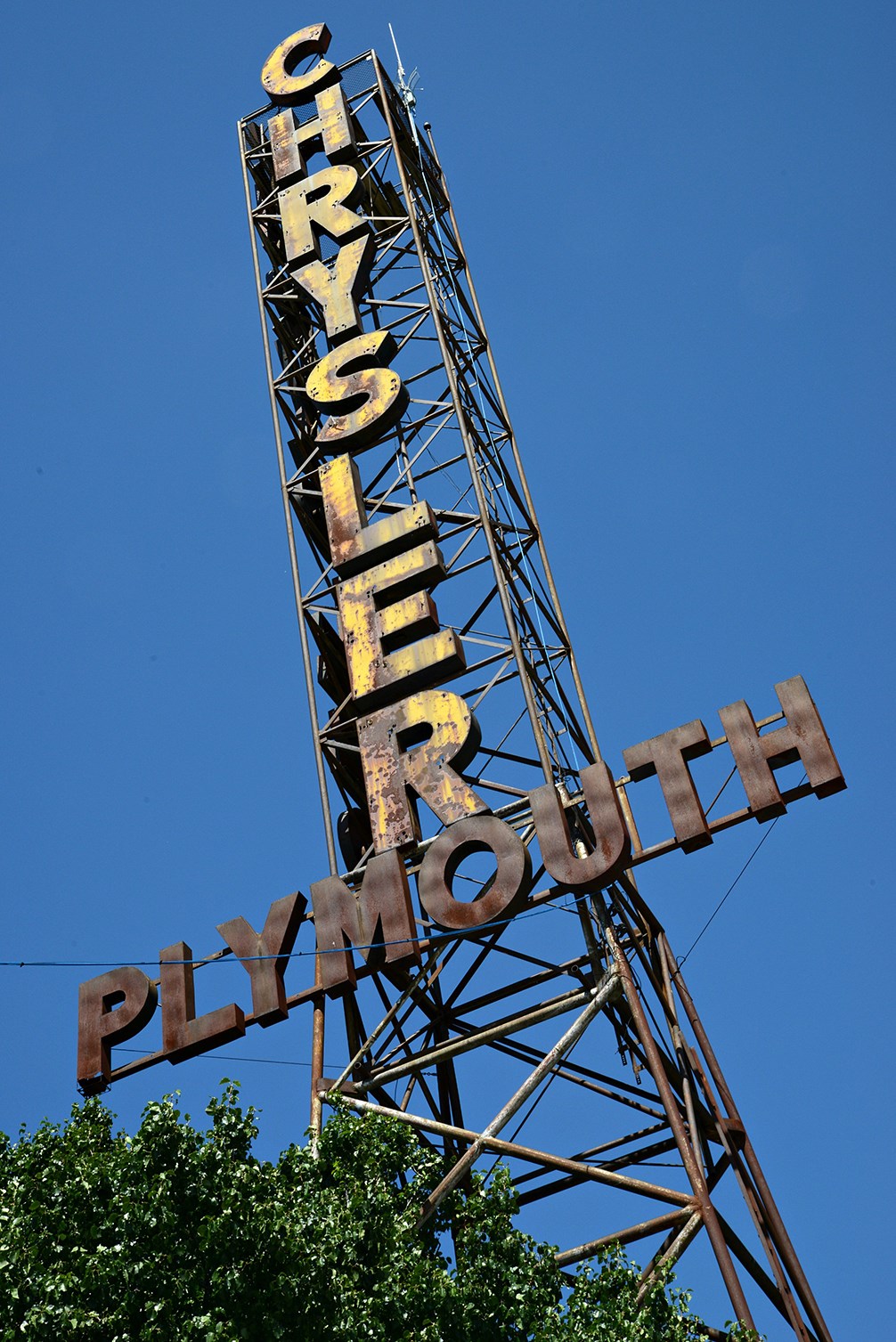
Lynne Rostochil
Another crusty relic beckons area photographers and nostalgia lovers from all over the state – the Eagle Park sign in Cache. For decades, Comanche County was home to Craterville, an amusement park named for a meteor crater in the nearby Wichita Mountain Wildlife refuge. In the mid-1950s, Fort Sill purchased the Craterville land, and Cache residents, Herb and Cora Woesner, decided to fill the amusement park void by opening Eagle Lake at the edge of town in 1957. They started with just four rides, but soon the place boasted many more, including the Wild Mouse roller coaster. The couple also added horseback rides, an arcade, and an ice-skating rink to the thriving park.
Over time, Herb acquired twenty-two early Oklahoma buildings that were slated for demolition and moved them to his thirty-five-acre park. This collection of buildings included Frank James’ home, several storefronts, an old depot, and most impressive of all, the imposing Quanah Parker Star House. In the 1970s, two period movies, “Moonbeam Riders” and “Charge of the Model T’s,” were filmed among the buildings, and several festivals were held throughout the year in the Old West Town.
By 1985, the Woesners could no longer afford the costly insurance premiums needed to keep the park open, so Eagle Park closed its doors and slowly began to deteriorate. The park was on the 2007 Endangered Places list, but not much happened to remedy its sad condition. Today, the old Trading Post is still open, and that’s where curious history lovers can call to schedule a tour of the dilapidated Quanah Parker house and the remains of the rest of the Old West Town. As for the sign, its once-vibrant paint scheme is faded, and the rust is slowly taking over.
One sign that has defied the odds and remains in excellent original condition is the cheerful Winchester Drive-In sign in Oklahoma City. There are three drive-in theaters remaining in central Oklahoma -- the Beacon in Guthrie, the Chief in Chickasha, and the beautiful Winchester in the south part of Oklahoma City. The Winchester was built by the Shanbour family, who owned several theaters around the state, and it opened in 1968 with a 400-car capacity. This rare motion neon sign dates from that time and features a rifle toting cowboy waving at passersby to join him in watching a flick on the big screen and maybe enjoy a bucket or two of popcorn.
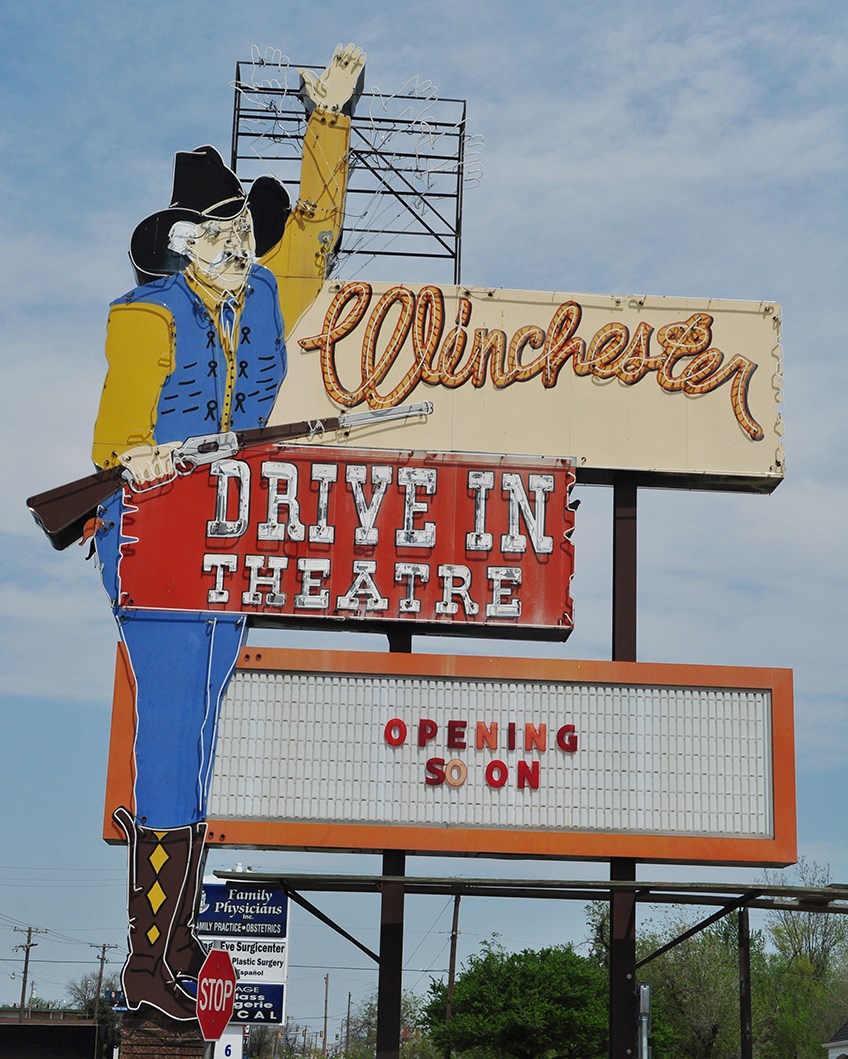
Lynne Rostochil
In 2013, the plastic part of the Winchester sign, as well as the perimeter fence and portions of the screen, were damaged in a tornado. Lindy Shanbour, who has run the theater since the day it opened, quickly repaired the damage in time for the Winchester’s busy summer schedule. Although he is in his late ‘80s now, Shanbour continues to run the theater with great love and care, making it, by far, one of the metro’s most popular movie spots in the summer months.
Lost and Found
The Le'Ora's Beautye Salon sign is in the heart of the once-thriving African-American community near downtown Oklahoma City. Sadie Leora Hodge opened the salon in this location in 1944, and it soon became an important gathering place for women throughout the neighborhood. As proof, in the 1960s, the salon was an election polling station.
As for Hodge, she was appointed to the Oklahoma Small Business Advisory Council in 1964. The council was comprised of successful small business owners throughout the city to help other small businesses get started and thrive. Being a woman and African-American, this appointment must have been quite an achievement at the time.
As people of color left the neighborhood in the years after the Civil Rights movement and moved to the suburbs, Le’Ora’s clientele declined and the shop eventually closed. The historic building sat vacant with its still-vibrant sign swinging in the wind for many years before workers set about to demolish it in 2012.
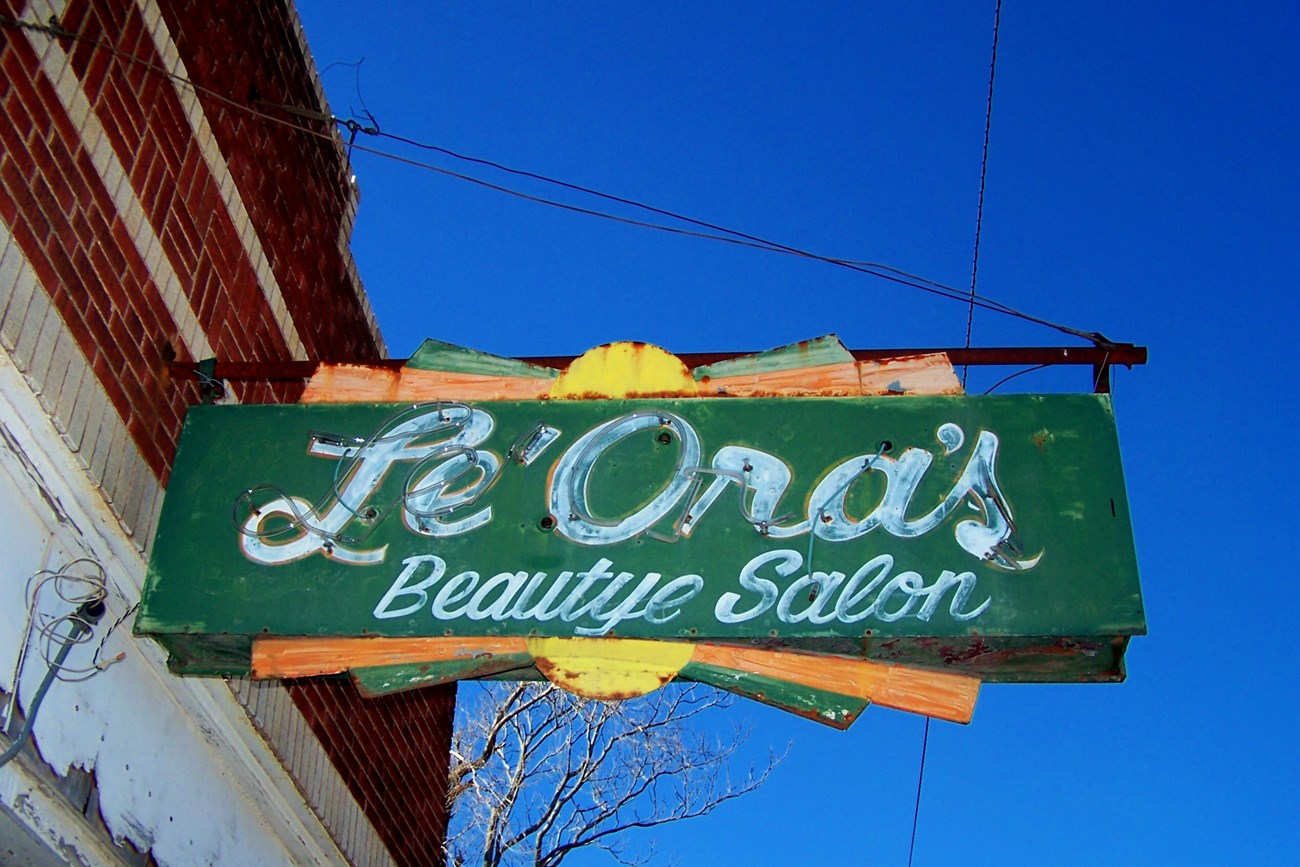
Lynne Rostochil
During demolition of Le’Ora’s, workers uncovered a c. 1920s Coca Cola sign advertising the new “handy six-box,” hidden for years beneath 1950s-era siding. A member of RetroMetroOKC, an Oklahoma City historical society was notified. He loaded the dismantled sign in his truck and took it to a secure warehouse, where it remains today.
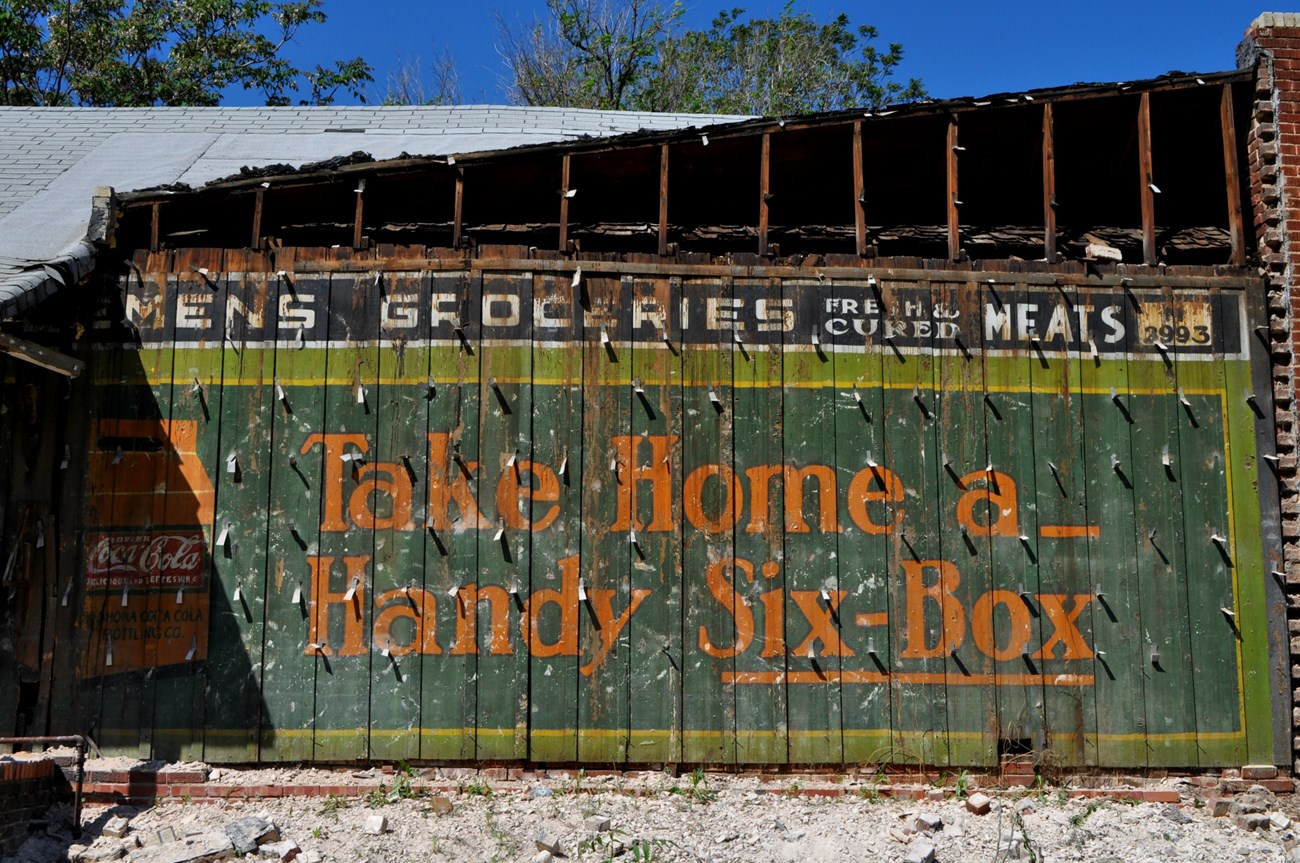
Lynne Rostochil
Another Lost Sign
One of Route 66’s most iconic Oklahoma signs was this very tall beauty featuring two palm trees that advertised the popular Oasis Drive-In on the outskirts of El Reno. By the early 2000s, the building and sign were in sad shape, but because it was such a Route 66 icon and beloved by the citizens of El Reno, owners received grant money to restore it. The sign's good fortune didn't last, unfortunately, and it toppled during a heavy storm in 2009.
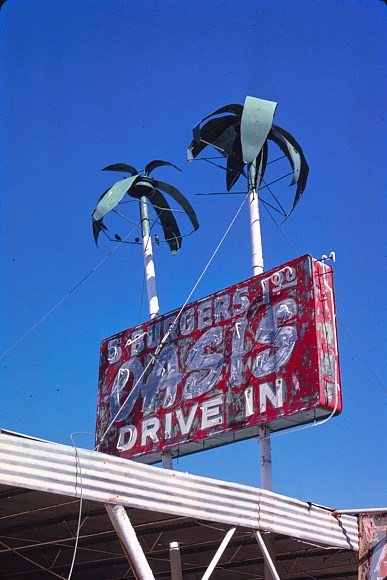
John Margolies
Although city leaders initially promised to save and refurbish the sign, sadly, this optimistic promise didn't come to fruition and the two palm trees and building were demolished in 2010. The site is a vacant lot today.
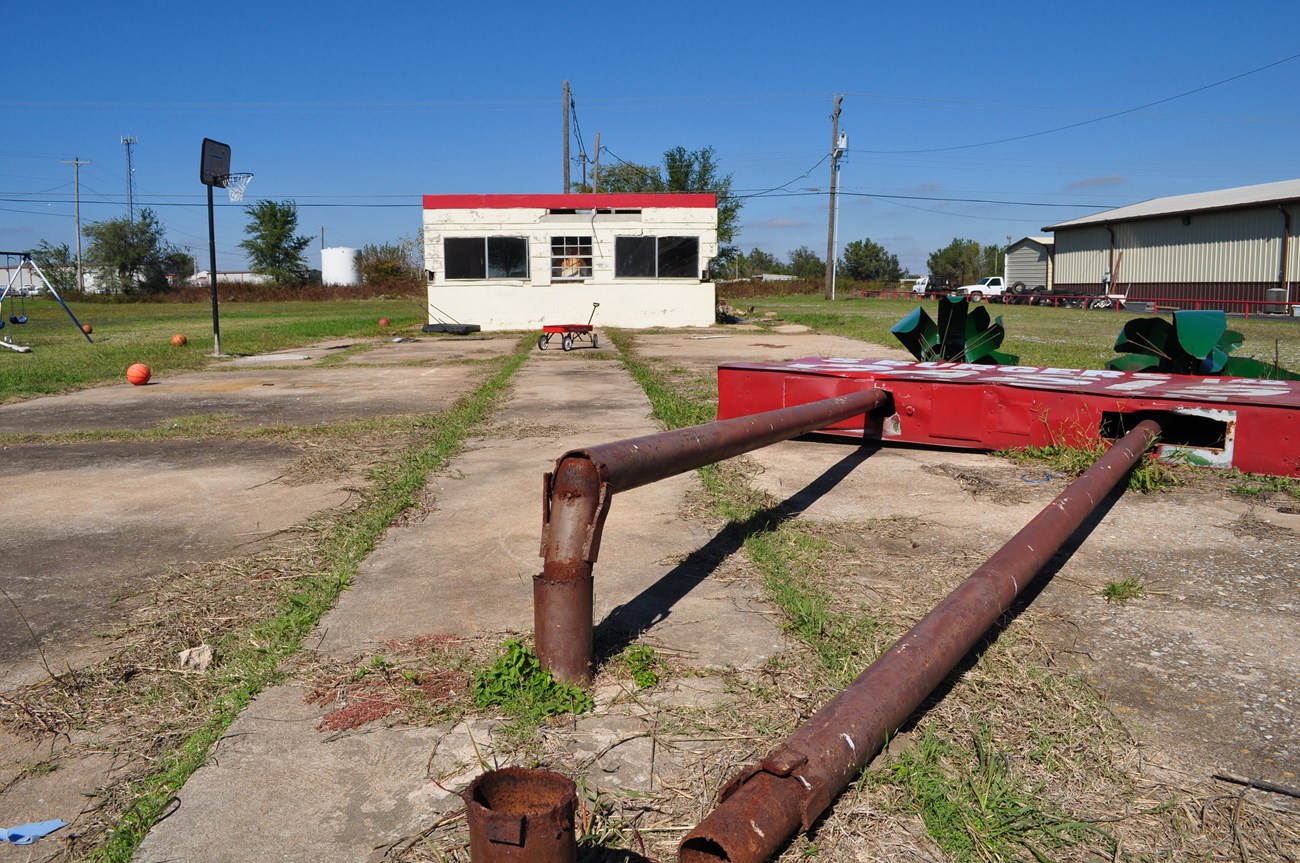
Lynne Rostochil
Mac Teague
One of the most creative sign designers of the mid-century era was Mac Teague. Teague began his career as a sign painter in 1950 in his hometown of Durant. He moved to Oklahoma City in 1954 to work at Tinker Air Force Base while also studying art at Central State University, now the University of Central Oklahoma. To help make ends meet, he started a sign company in his spare time out of a small building in the northwest part of town. The business grew quickly, and Teague soon abandoned his job at the base and moved to a larger property in southwest Oklahoma City where he built a big shop and warehouse and became a sign designer and builder extraordinaire.
Teague spent the rest of his long career in his shop making signs and later starting another company in the same space manufacturing purple martin birdhouses. Perhaps not surprisingly, Teague won many design awards for his unique and wondrous signs, which he made "on the theory that a sign has got to pull in more business than the sign costs (the customer)." The Country Club Shops sign is an example of Mac Teague’s extraordinarily creative work.
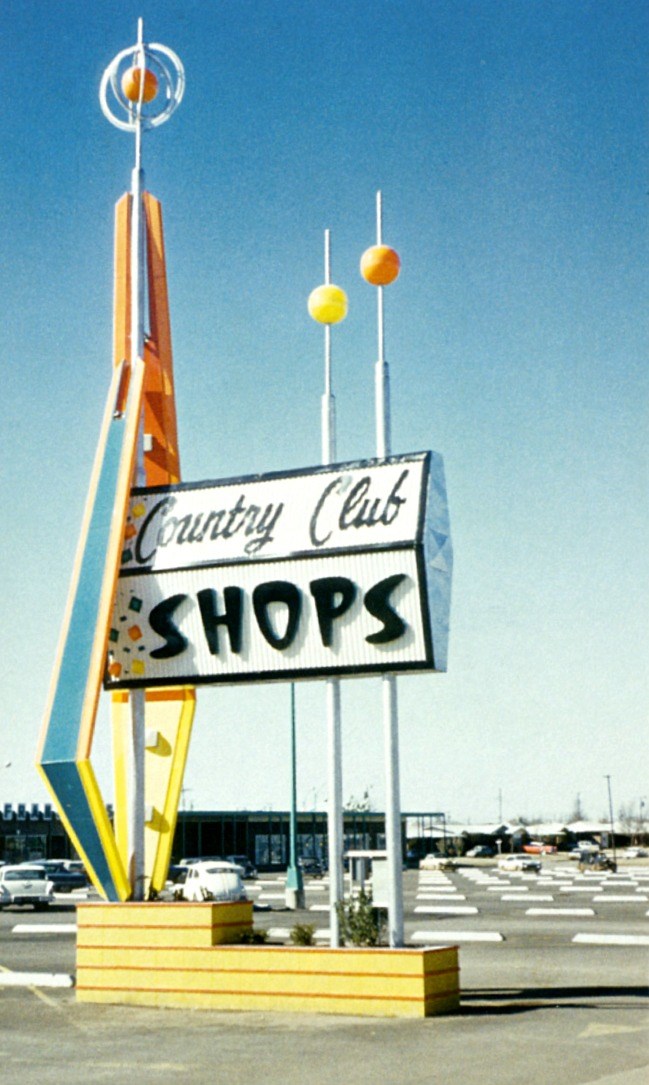
Mac Teague
Restored Signs
In the last decade, many Oklahomans have come to appreciate the state’s historic signage, and as buildings have been revitalized, so have the signs that adorn them. One example of this is the dramatic Tower Theater sign in Oklahoma City. The sign dates to the opening of the theater in 1937. After the theater closed in 1989, it was briefly a live music venue in the late 1990s. but then closed again in 2000. The sign remained dark until new owners had it partially restored in 2010, however, letters frequently refused to light up and the sign continued to be dark most of the time. When the theater was purchased by the Pivot Group in 2014 and rehabbed as a movie theater, events center, and concert venue, the sign was completely restored inside and out and was operational again in 2016.

Lynne Rostochil
Another historic sign that received a beautiful restoration is the stunning Meadow Gold sign in Tulsa. The 1930s-era sign originally sat atop a gas station at 11th and Lewis on Route 66, but when the structure’s owner wanted to demolish the building – and the sign along with it – in 2004, the Tulsa Foundation for Architecture (TFA) and concerned citizens throughout the country rallied and were able to rescue the sign and put it in storage until funds could be raised to reinstall it. After the TFA received a National Park Service grant, the sign was restored then mounted on a new building along Route 66 at 11th and Quaker in 2009. Two clocks that matched the originals were added in 2016.
Conclusion
Although many of Oklahoma’s signs are either gone or endangered, people throughout the state have begun to appreciate these exciting pieces of roadside art not only for the nostalgia they evoke, but also for the unique character they bring to their surroundings. As an example of this new appreciation, Oklahoma’s Route 66 signs are included on the 2018 Preservation Oklahoma’s Endangered Places list to heighten awareness and to let sign owners know that people care about these unique treasures.In addition, a whole new generation of neon signs has been popping up in the last decade in areas such as Automobile Alley in Oklahoma City and the Brady District in Tulsa. Recently, Tulsa leaders passed a plan to allow for more neon signage along Route 66, so hopefully we will be seeing many more signs lighting up the night sky along the thoroughfare in the near future.
Symposium
You can read other articles from the proceedings of Are We There Yet? Preserving Roadside Architecture and Attractions, April 10-12, 2018, Tulsa, Oklahoma. Or explore other content from the National Center for Preservation Technology and Training (NCPTT).
